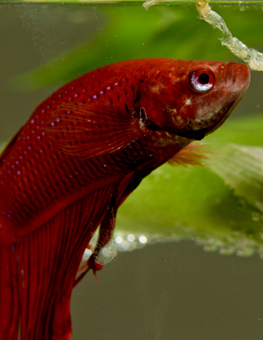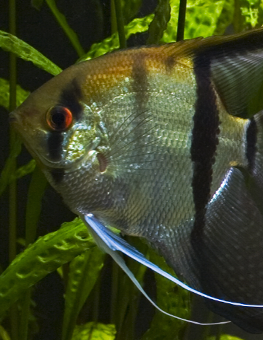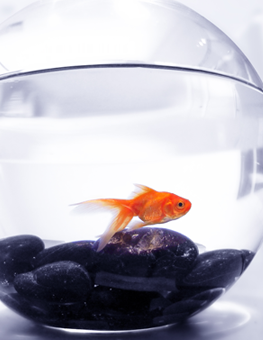Understanding Aquarium Filtration
Just as your fish are living beings, think of their water as another life form within the aquarium.
To properly establish the water in your fish tank, you'll need to take several important factors into consideration. Specifically, the water must be:
- The right temperature
- Free of waste materials and the byproducts of waste material decay
- At the appropriate balance of acidity and alkalinity
- Moving and not "hemmed in" by a lack of access to airborne oxygen
- Free of harmful chemicals such as chlorine, ammonia and airborne contaminants
Water stability is what your fish require. Aquarium filters tackle the bulk of this by doing the job of cleaning and moving the tank water.
Understanding filtration
Aquarium filtration is a three-part process. You can choose to use a filter which performs all three tasks or use three different filters. Filters are designed to clean the water:
- Mechanically. They siphon out actual particle matter such as uneaten food.
- Chemically. The activated charcoal removes toxic substances such as airborne contaminants from the water.
- Biologically. Products encourage the growth of special bacteria that process ammonia and nitrite and convert these materials to relatively harmless nitrate.
Remember: When you set up your new aquarium, filters need some time to adjust to the tank. Levels of toxic byproducts of waste material can quickly escalate. Be sure to keep a strict eye on your tank when it is new.
Signs of faulty filtration
Water clouded by tiny bits of particulate matter will be the telltale sign that the mechanical portion of your filter that is not working. You can assess whether your aquarium’s chemical and biological filters are working by testing the water with easy-to-use water-testing kits. You’ll want to look out for the following:
- Ammonia. Fish waste and decaying organic matter break down into ammonia, which can be toxic to your fish. Until your filtration system removes the ammonia as it is generated, test the tank water daily. If ammonia tests high, your only alternative is to replace enough (but not too much) water in the aquarium to bring the levels down.
- Nitrite. Nitrite is the product of the breakdown of ammonia by your filtration system. As your filter matures, nitrite levels will rise while ammonia levels decrease. This is a positive indication that your aquarium is stabilizing and is becoming a healthy, fish-friendly environment.
- Nitrate. After a few weeks, both the ammonia and nitrite levels should drop to near zero. This means your aquarium filter has reached the desired efficiency level. At this point, you must test for nitrate, the final breakdown product of nitrite and ammonia. As with nitrite, the only way to reduce levels is to change out a portion of the aquarium water.
- pH. For most freshwater aquariums, the only other water test needed is for pH. Water has varying degrees of either acidity or alkalinity. The balance between the two is measured as pH. In the average aquarium, you will want the water to be at a pH of 7.0, which is considered the perfect balance between acidity and alkalinity.
- Stable system checks. Once the filtration system is running smoothly, only occasional water checks are necessary. If you change the tank conditions or add new fish, however, test to ensure that the filter is keeping up with the increased workload.
Rising ammonia and/or nitrite levels can indicate that your filter is in need of maintenance, or that it is undersized. When both ammonia and nitrite consistently test zero, your filter is running smoothly.
When maintaining your aquarium, whether it is water temperature, pH levels or any other factor, remember that moderation is always the key. Fish will not thrive in an environment of extremes. Keeping a well-balanced, clean environment will keep your fish happy and healthy.











